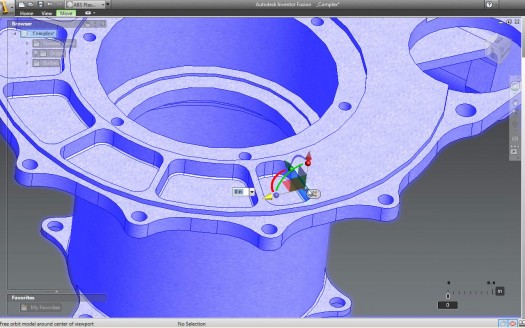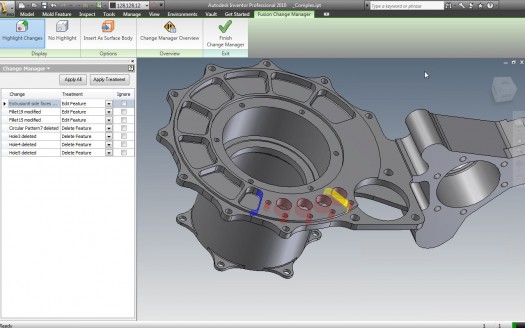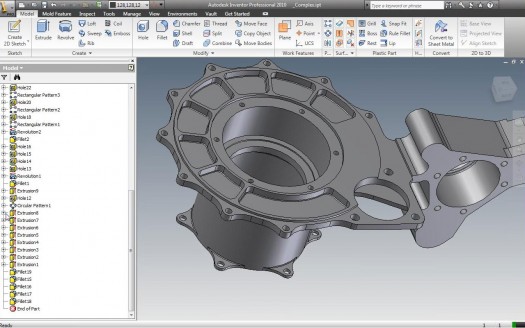
Yes, Autodesk Fusion has been updated to actually add the ‘Fusion’ bits. While the first go around left a lot of questions, this version shows you a little more about the direction Fusion is headed and why Inventor plays a really big part of it all.
The Inventor Fusion Workflow
We were able to get a preview of Fusion in action from Autodesk’s Product Manager of Emerging Products and Technologies, Kevin Schneider. Where it differs from the first version functionality, is in the new ability to float back and forth between parametric and direct modeling. It’s actually a very slick way of going about it all, except it’s not all done in a single modeling environment. Here’s my brief experience with it and the basic steps that make up the workflow.
Step 1: Make Your Change in Fusion
Here is what the Fusion application is currently all about. Just a little bump of direct editing love here and there. Bring in 3D geometry and make direct edits to the model. For this workflow to work optimally with Inventor though, you’ll want the original part to be created using Inventor. That is simply because Fusion uses the parametric history developed in Inventor to maintain the path of changes being created in Fusion.
Step 2: See Your Change in Inventor
Now, after you’ve created the changes in Fusion, you can open up the model back in Inventor. This is where the Change Manager kicks in. You see it over in the left column of the screenshot below. Fancy huh? It tells you what features have been changed and gives you the choice of either accepting each change or ignoring each change. What you don’t see here is how the Change Manager updates the list of changes depending on what parent feature is accepted.
Step 3: Accept Your Change in Inventor
I know we all have trouble accepting change, but as you see in the last image, it’s simply done by clicking ‘Apply Treatment’. Once you choose what changes to accept and which to ignore, you’ll see the features update accordingly. You want to pay close attention to the features. You’ll notice there are no delete/move faces. It adds real features or modifies the existing features. In the case where a irregular surface body is formed, Inventor will recognize that as a shape feature.
Some Things to Note
You need Inventor
Right now, to get the back and forth parametric-direct-parametric functionality you need to have Inventor installed. The actual Fusion doesn’t happen inside of Inventor Fusion. But as this is a technology preview, the tech could feasibly be added into or alongside Inventor.
Inventor Fusion doesn’t work with assemblies yet
The fusion part where you get the Change Manager capabilities only works with parts right now. If the changed parts are used in the assembly, you will see them update. You just won’t be doing much as far as top-down modeling changes via the Change Manager.
It’s easy to see, at this stage, that Fusion make the most sense in the concept phase of product design. They’ve got a good plan for how it works along with existing features created in Inventor, but I think for it to get some traction we’ll have to see more functionality with assemblies and for import files. That’s a whole other ball of feature recognition grease to get into, but one I imagine is being looked at pretty hard if all these MCAD companies want to take a nip from each others market share.
If you have Inventor 2010 with SP01 installed and want to see the Change Manager Technology, you can download Inventor Fusion here.
Here’s a little bit of a video to see the goods and hear the suave voice of the narrator tell you how direct modeling and parametric modeling are now united.






